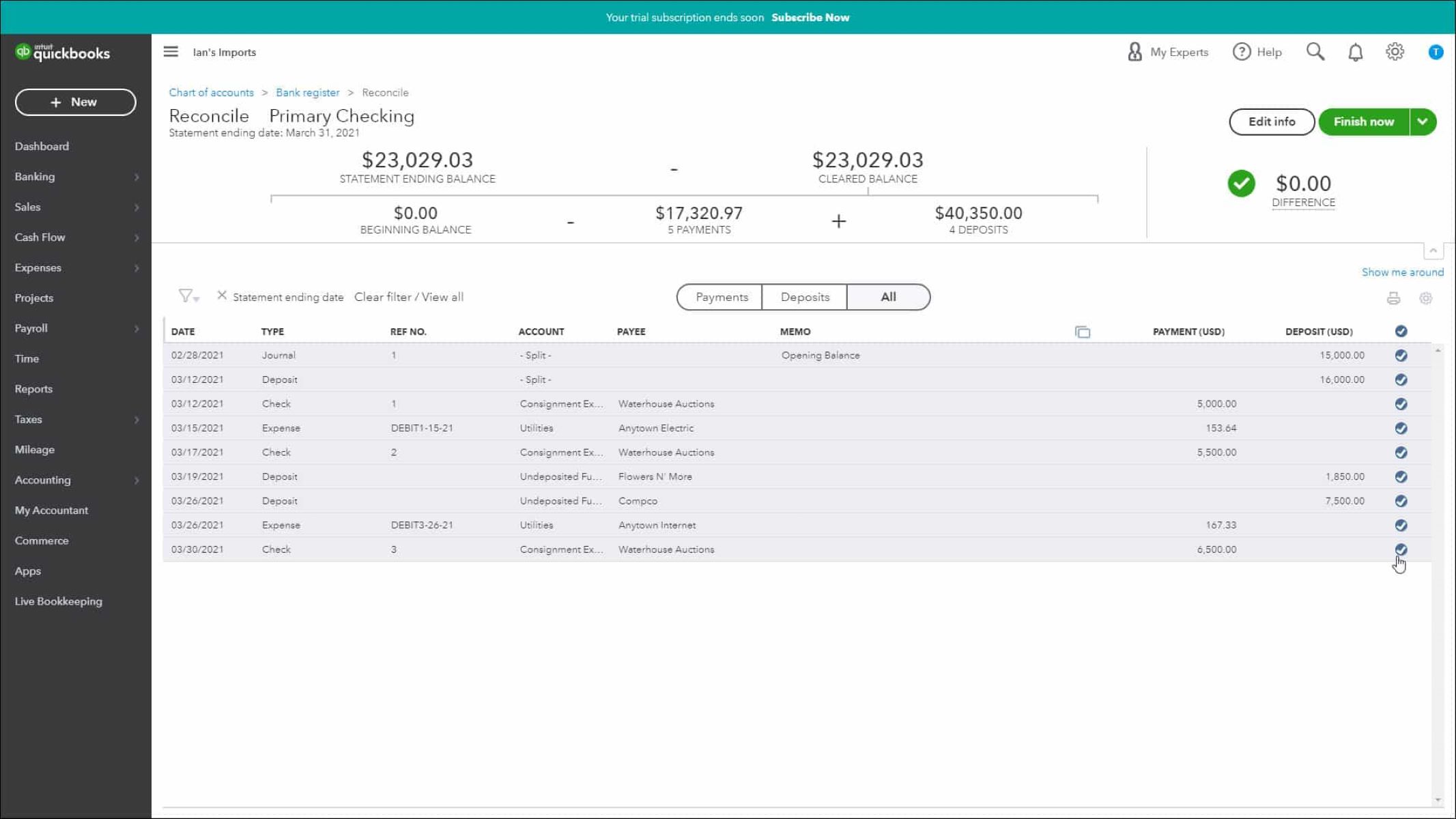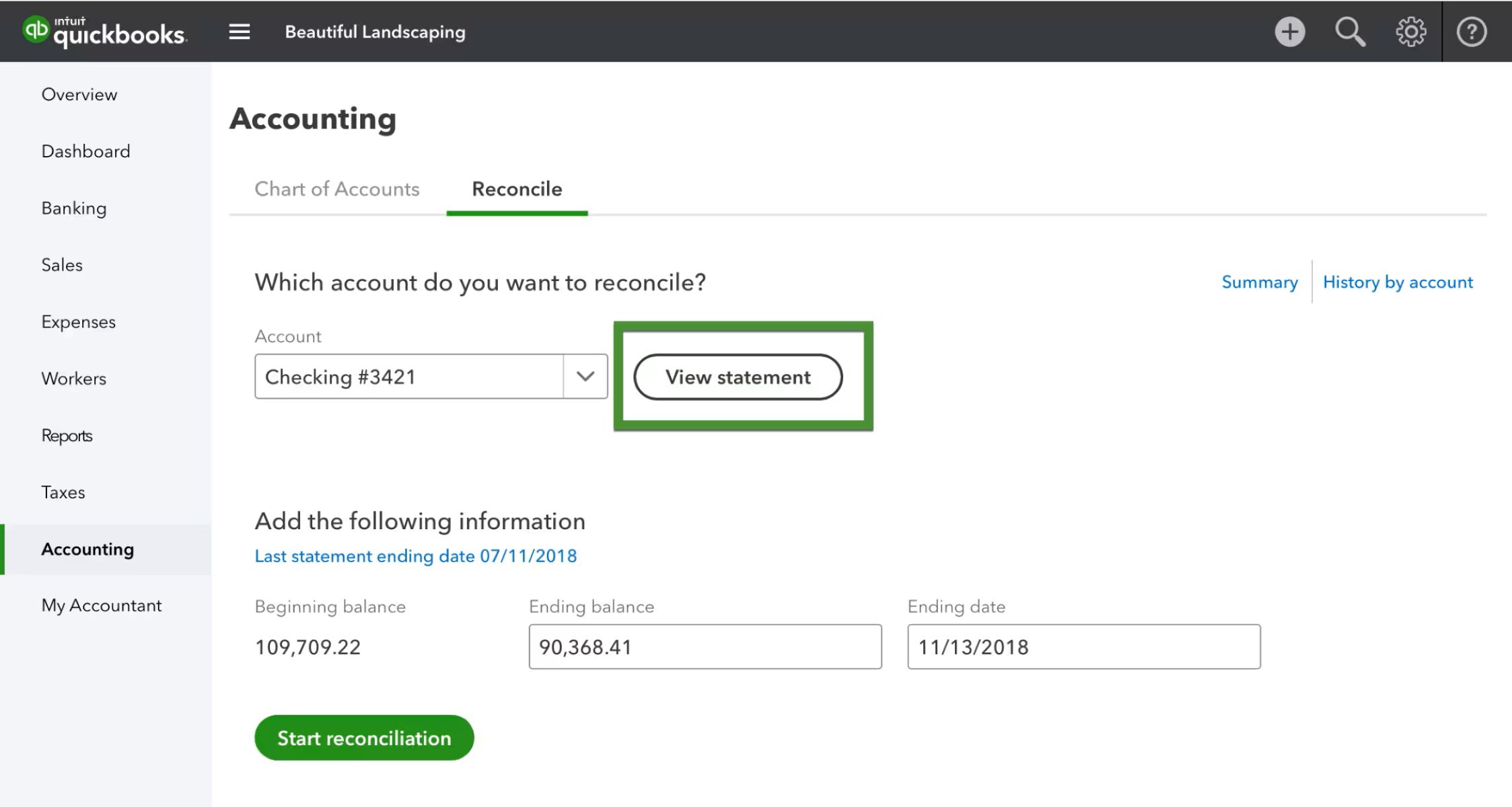Introduction
Matching transactions in QuickBooks is a crucial task for maintaining accurate financial records. Whether you are a small business owner or a bookkeeper, ensuring that your transactions are properly matched is essential for effective bookkeeping and financial reporting.
When you receive payments or make purchases, it is important to match these transactions with the corresponding invoices, bills, or sales receipts in QuickBooks. This helps you keep track of your income and expenses, reconcile your accounts, and generate accurate financial reports.
In this article, we will guide you through the process of matching transactions in QuickBooks. We will explore both automatic and manual matching methods, as well as provide troubleshooting tips to address any issues you may encounter along the way.
By the end of this article, you will have a clear understanding of how to efficiently match transactions and ensure the accuracy of your financial records in QuickBooks.
Understanding Matching Transactions
Before diving into the process of matching transactions in QuickBooks, it is important to understand what it means to match transactions and why it is necessary.
Matching transactions refers to linking your incoming or outgoing payments with the corresponding invoices, bills, or sales receipts in QuickBooks. This process helps you keep your financial records organized and accurate.
When you receive a payment or make a purchase, QuickBooks records these transactions individually. However, you need to connect them with the appropriate invoices or bills to reflect the true picture of your financial activity.
Matching transactions is crucial for several reasons:
- Accurate financial reporting: By matching transactions, you ensure that your income and expense records are correctly represented in your financial reports. This allows you to make informed decisions based on accurate financial data.
- Easier bank reconciliation: Matching transactions makes the bank reconciliation process much smoother. It enables you to compare your QuickBooks records with your bank statements and identify any discrepancies.
- Clear audit trail: Matching transactions creates a clear audit trail, making it easier to track and review your financial activities. This is particularly important in case of an audit or when seeking financial advice.
Understanding the importance of matching transactions will help you appreciate the significance of this task and motivate you to ensure its accuracy in your QuickBooks account.
Matching Transactions Automatically
QuickBooks provides a convenient way to automatically match transactions, making the process faster and more efficient. Here are the steps to match transactions automatically:
- Connect your bank account: To enable automatic matching, you first need to connect your bank account to QuickBooks. This allows QuickBooks to access your bank transactions and compare them to the transactions in your QuickBooks account.
- Import bank transactions: Once your bank account is connected, you can import your bank transactions directly into QuickBooks. This ensures that your QuickBooks account is up to date and reflects the latest financial activity.
- Review and categorize transactions: After importing the bank transactions, review each transaction and categorize it accordingly. QuickBooks will automatically suggest categories based on your previous transactions, making this step quicker and more accurate.
- Match transactions: Once you have categorized the transactions, QuickBooks will attempt to match them with the corresponding invoices, bills, or sales receipts in your account. It compares the amounts, dates, and other transaction details to find the best match.
- Verify matches: After QuickBooks suggests matches, review them to ensure their accuracy. QuickBooks is generally accurate in its matching, but it’s always good practice to double-check to avoid any mistakes.
- Confirm and save matches: Once you have verified the matches, confirm and save them in QuickBooks. This links the transactions together, reflecting the accurate financial exchange between your business and your customers or vendors.
Automatic matching not only saves you time, but it also reduces the chances of errors and ensures consistency in your transaction records. However, it’s important to review and verify the matches to maintain the integrity of your financial data.
Matching Transactions Manually
While QuickBooks offers the option to automatically match transactions, sometimes manual matching is required. This typically occurs when QuickBooks cannot find a suitable match based on the transaction details. Here’s how you can manually match transactions in QuickBooks:
- Identify unmatched transactions: Start by identifying the transactions in QuickBooks that have not been automatically matched. These transactions will appear as “unmatched” or “uncategorized” in your account.
- Review transaction details: For each unmatched transaction, review its details such as amount, date, customer/vendor name, and description. Use this information to search for the corresponding invoice, bill, or sales receipt in QuickBooks.
- Search for matches: Utilize the search function in QuickBooks to find potential matches. Enter relevant information, such as the customer or vendor name, amount, or date, to narrow down the search results.
- Compare and select matches: Once you have a list of potential matches, compare the transaction details with the unmatched transaction. Look for similarities in amounts, dates, and other relevant information. Select the most appropriate match that aligns with the unmatched transaction.
- Verify and adjust amounts: After selecting a match, verify that the amounts are accurate. If necessary, adjust the amounts to reflect any differences between the unmatched transaction and the selected match.
- Save and confirm the match: Once you have verified the match and made any adjustments, save and confirm the match in QuickBooks. This will link the transactions together, maintaining the integrity of your financial records.
Manual matching allows you to take control of the matching process and ensure accuracy when automated matching fails. It requires careful attention to detail, but it helps maintain the integrity of your financial data within QuickBooks.
Reconciling Matching Transactions
Once you have successfully matched transactions in QuickBooks, the next step is to reconcile your accounts to ensure they align with your bank statements. Reconciliation is an important task that helps you identify any discrepancies and ensure the accuracy of your financial records. Here are the steps to reconcile matching transactions:
- Access the reconciliation tool: In QuickBooks, navigate to the “Banking” tab and select the “Reconcile” option. Choose the appropriate bank account that you want to reconcile.
- Enter the statement information: Provide the statement date and ending balance from your bank statement. This will help QuickBooks compare your QuickBooks transactions with the bank statement transactions.
- Review the transactions: QuickBooks will display a list of transactions that need to be reconciled for the selected period. Ensure that all the matched transactions are included in this list.
- Match and reconcile transactions: As you review each transaction, ensure that the amounts and dates match the corresponding bank statement transactions. Use the “Match” button to confirm the reconciliation of each transaction.
- Address discrepancies: If you notice any discrepancies between the QuickBooks transactions and the bank statement transactions, investigate the issue to determine the cause. It could be an error in data entry or a missing transaction in QuickBooks.
- Make adjustments if necessary: If you identify any discrepancies, make the necessary adjustments to correct them. This may involve adding missing transactions, modifying amounts, or reconciling any outstanding items.
- Complete the reconciliation: Once you have reviewed and reconciled all the transactions, ensure that the difference between the bank statement balance and the QuickBooks balance is zero. This indicates a successful reconciliation.
Reconciling your accounts regularly helps maintain accurate financial records and provides you with a clear understanding of your business’s financial health. It is recommended to reconcile your accounts on a monthly basis or according to your specific business needs.
Troubleshooting Matching Transactions
While matching transactions in QuickBooks is generally a smooth process, you may encounter some challenges along the way. Here are some common issues that you may face and troubleshooting tips to help you overcome them:
- No match found: If QuickBooks is unable to find a match for a transaction, double-check the transaction details for accuracy. Ensure that the amounts, dates, and names are correct. If necessary, manually search for a matching transaction using the search function in QuickBooks.
- Inconsistent naming conventions: Inaccurate or inconsistent naming conventions can make it difficult for QuickBooks to match transactions. Ensure that you consistently use the same names for customers, vendors, and accounts to improve matching accuracy.
- Duplicate transactions: Sometimes, duplicate transactions can result in incorrect matching. To resolve this, review the transactions and delete any duplicates. Use caution when deleting transactions and always make a backup of your data before making any changes.
- Transaction dates don’t match: If the transaction dates in QuickBooks and the bank statement don’t match, verify the accuracy of the dates. If there is an error, update the dates accordingly to ensure proper matching.
- Bank feed issues: Issues with bank feeds can disrupt the automatic matching process. If you encounter problems, check for any notifications from your bank or disconnect and reconnect the bank account to re-establish the feed.
- Incorrect categorization: Transactions that are categorized incorrectly can hinder matching. Review the categorization of transactions and ensure they are accurately classified to facilitate proper matching.
If you are unable to resolve the issues yourself, it may be helpful to seek support from the QuickBooks customer service team or consult with a professional bookkeeper or accountant.
By troubleshooting and addressing any issues that arise during the matching process, you can ensure the accuracy of your financial records in QuickBooks and prevent any discrepancies from affecting your business’s financial health.
Conclusion
Matching transactions in QuickBooks is a vital aspect of maintaining accurate financial records for your business. By connecting your bank account, importing transactions, and using either automatic or manual matching methods, you can ensure that your financial data is organized and aligned.
Through automatic matching, QuickBooks streamlines the process by suggesting potential matches based on transaction details. This can save you time and reduce errors. However, manual matching may be necessary when QuickBooks cannot find suitable matches.
Once you have successfully matched transactions, reconciling your accounts with your bank statements is crucial. This helps identify any discrepancies and ensures the accuracy of your financial records.
If you encounter any issues during the matching process, such as unmatched transactions or incorrect categorization, troubleshooting steps can help resolve them. Remember to review transaction details, check for duplicates, and address any bank feed or categorization issues.
By following these steps and maintaining accurate matching and reconciliation practices, you can rely on QuickBooks to provide you with a clear and up-to-date view of your business’s financial health.
Take the time to understand the importance of matching transactions and dedicate the necessary attention to ensure the accuracy and integrity of your financial data within QuickBooks. This will ultimately help you make informed decisions, track your financial progress, and run your business more effectively.

























